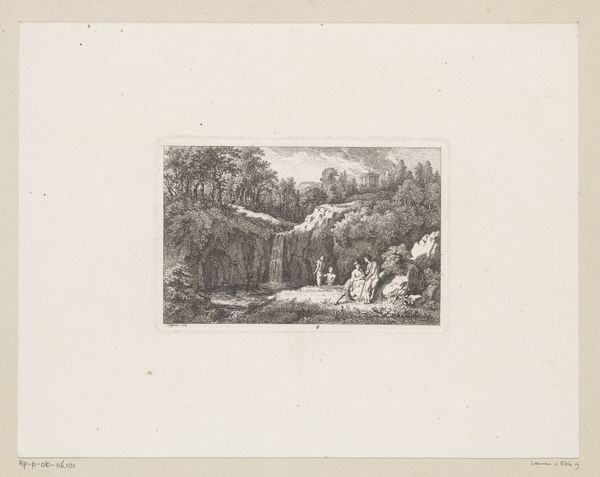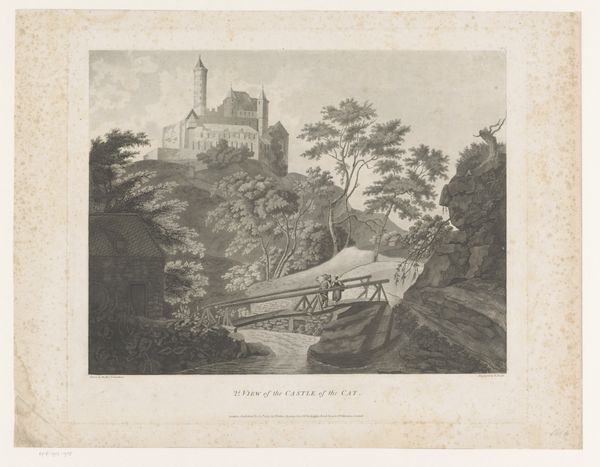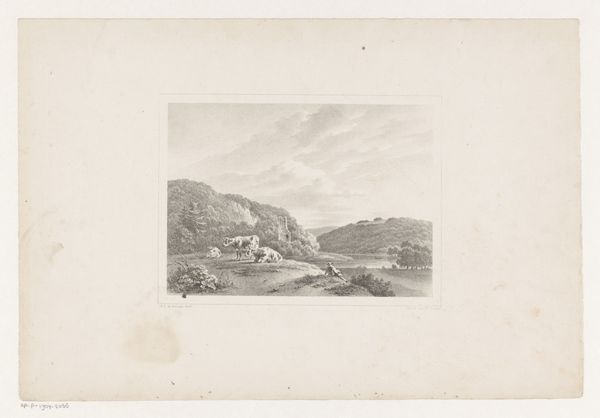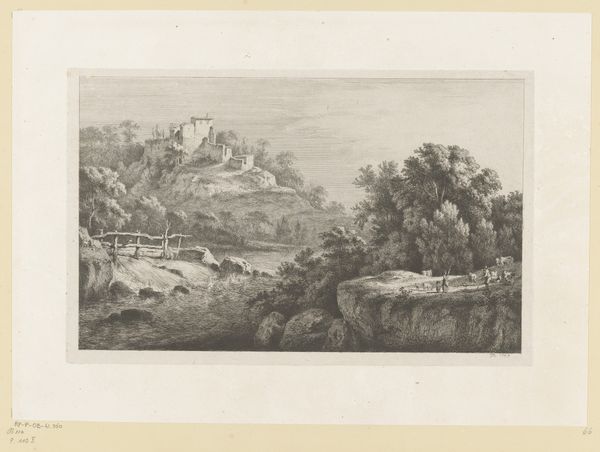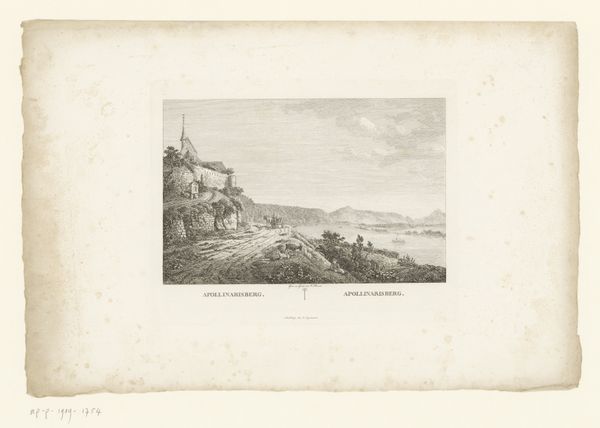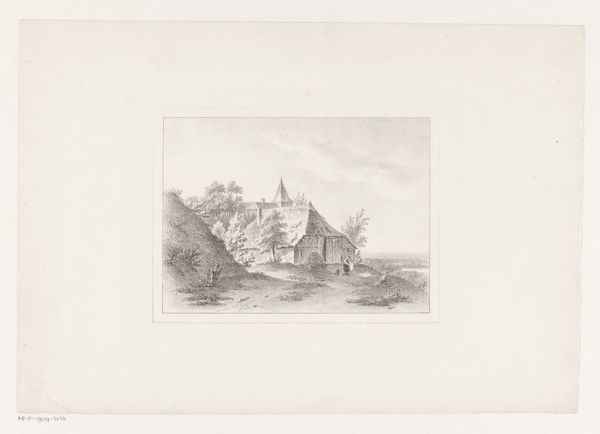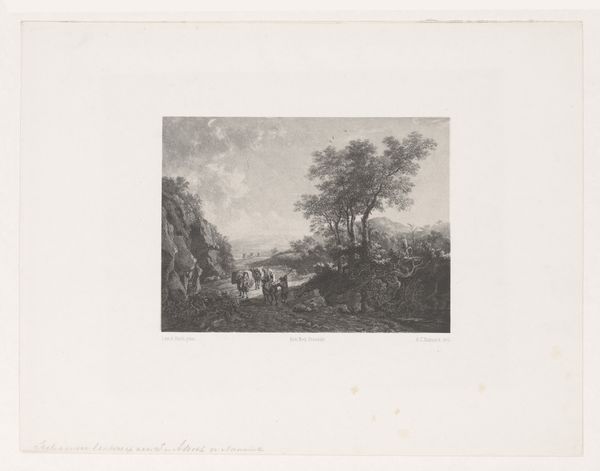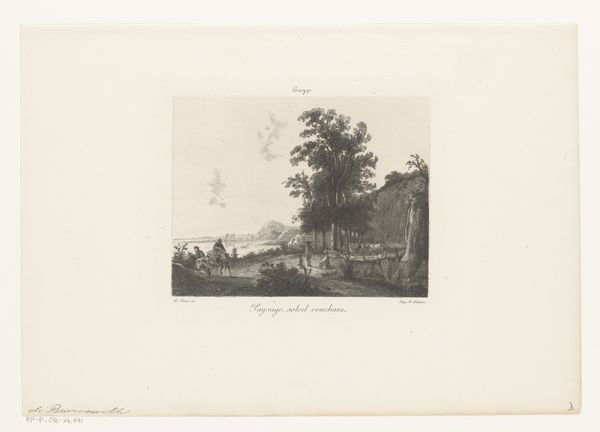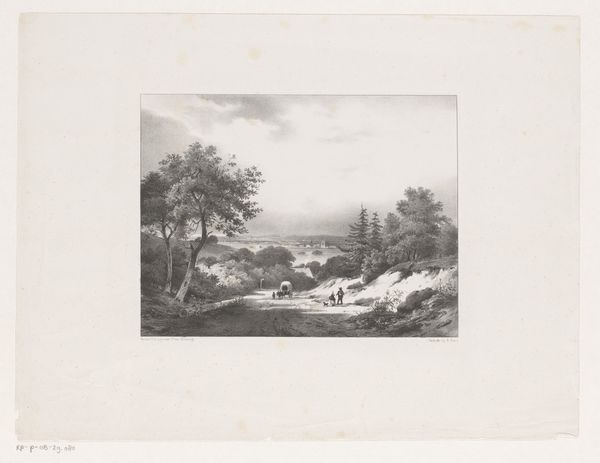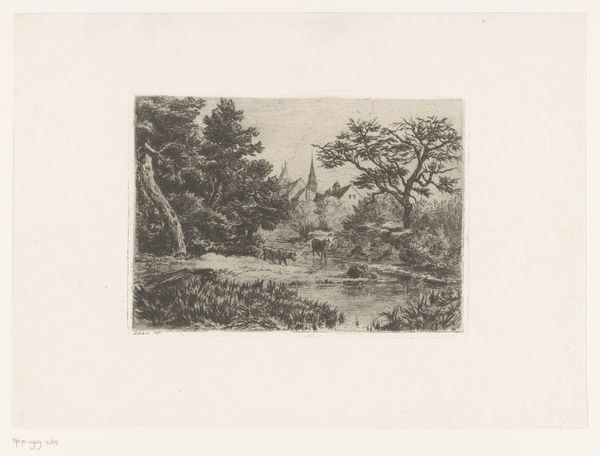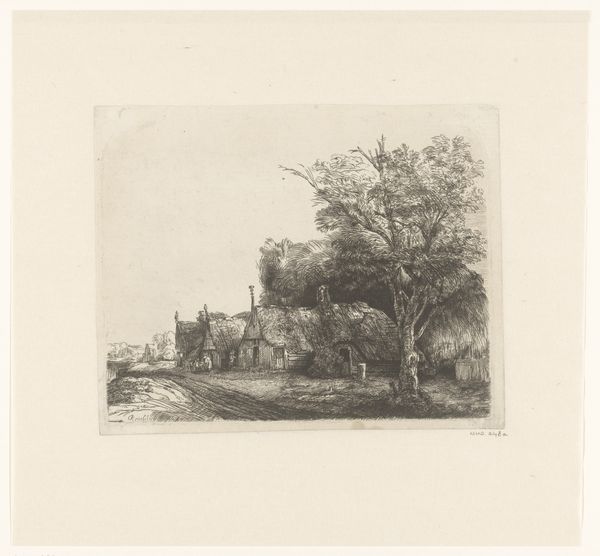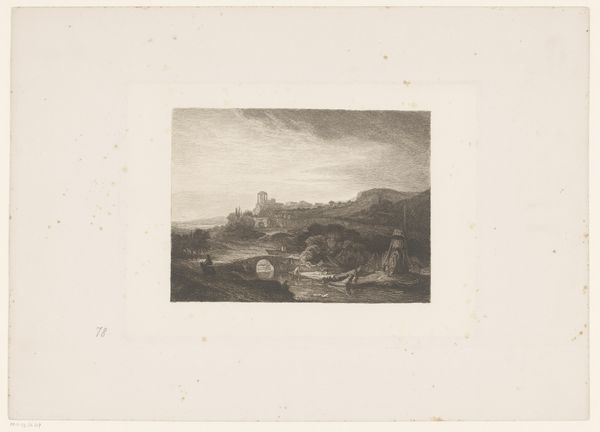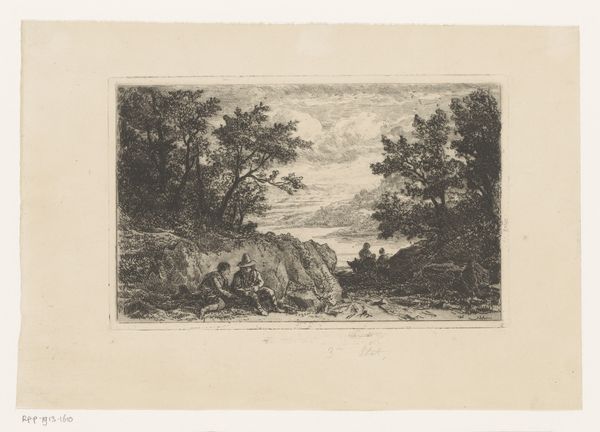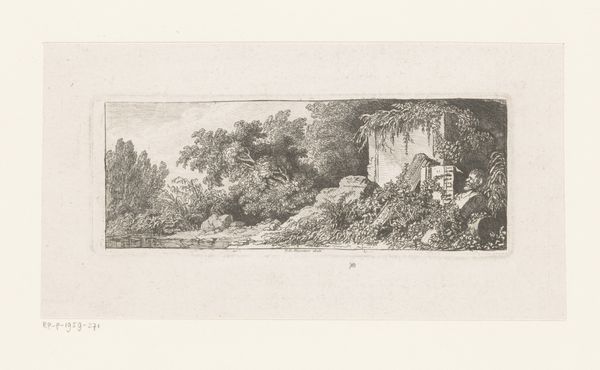
drawing, print, etching
#
drawing
# print
#
etching
#
landscape
#
etching
#
romanticism
Dimensions: height 335 mm, width 455 mm
Copyright: Rijks Museum: Open Domain
Curator: Take a look at "Kasteel Lansberg bij Kettwig" by Barend Cornelis Koekkoek, created sometime between 1820 and 1833. It’s housed here at the Rijksmuseum, an etching that really captures a romantic landscape. Editor: The overwhelming density makes me almost claustrophobic! All that meticulously rendered foliage pressing in… you can almost feel the weight of the stone of that distant castle settling. Curator: Yes, that's part of what I find so striking. There’s this delicate balance between the pastoral scene below and the somewhat imposing fortress in the background, you can notice how Koekkoek created this sense of depth. Think about the process— the precise and deliberate use of etching to build up textures, to convey the romantic feeling for landscape. It is the industrial process romanticized, isn't it? Editor: Absolutely, I find it particularly compelling when the artist's technique reflects an era's shifting priorities. This work strikes me as a fascinating negotiation between nature's grandeur and encroaching industrialism. The lines must be intentional—a testament to human ingenuity and a potential mark on an evolving environment. I think we should delve deeper to understand Koekkoek's world at that time to add more social contexts. Curator: It's not just the physical labor of producing an etching, either. It’s this interesting commentary on landscape as commodity, the way that printmaking made images more accessible, changing our relationship to place. He really was tapping into the popular imagination, into what people wanted to see and, crucially, to own, or consume, as they embraced new ideals of what the world might be. Editor: A keen insight! When we consider the etching process, layering line by line on a copper plate— we might wonder how the social conditions are involved: Where would the ink come from? How did he, and his audience for that matter, acquire the luxury to think of idealized versions of nature instead of surviving day by day? It makes you wonder whether everyone could own such romantic dreams. Curator: It's like capturing a fleeting emotion but freezing it with acid and metal! We often think of romantic landscapes in grand oil paintings, but this humble etching feels somehow more honest, more connected to the earth from which it came. Thank you for shining a light on its production. Editor: Indeed, by considering the context of its creation, its techniques, and its circulation, our impression transcends merely pretty. It challenges our expectations.
Comments
No comments
Be the first to comment and join the conversation on the ultimate creative platform.
